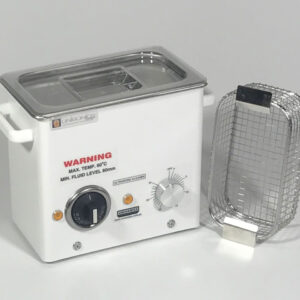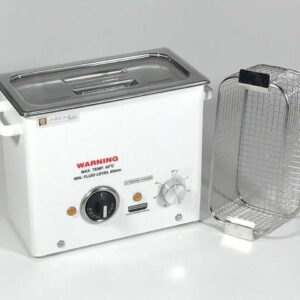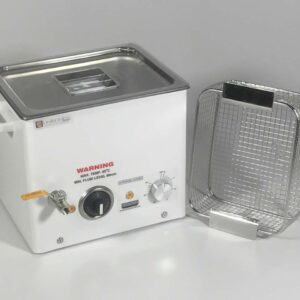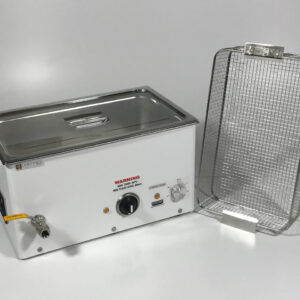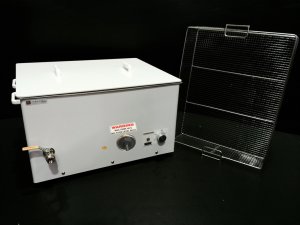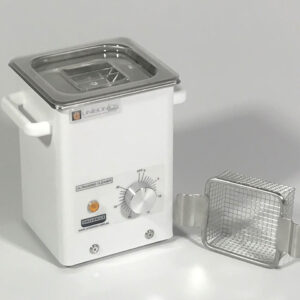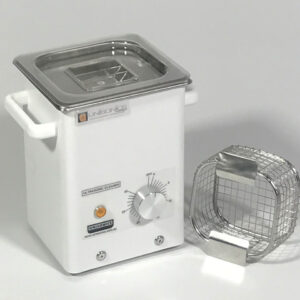Ultrasonic Cleaners
Ultrasonic Cleaning
Ultrasonic cleaning uses high frequency sound waves within a solution or solvent. These sound waves cause microscopic gas bubbles to expand to their limit and then collapse or implode causing a pressure wave. This process is called cavitation and when used together with a solution or solvent separates the contamination from parts and instruments. Ultrasonic cleaning is the fastest and most effective way of removing deposits and organic material from any type of surface and is particularly useful for cleaning instruments prior to sterilization.
The operating frequency is an integral part of the ultrasonic cleaning process. A lower frequency generates a larger gaseous bubble which produces a much stronger shock wave. At a higher frequency the microscopic bubbles will grow to a collapsible size at a more rapid rate causing many more times the number of implosions per unit time.
The temperature of the ultrasonic cleaning liquid also has a significant impact on performance levels. Maximum cavitation intensity occurs at a temperature range of between 50°C – 60°C in aqueous solutions with a decline in efficiency in temperatures above this.
Heating helps to degas as well as increase the chemical action of the liquid. A proper combination of temperature and the gaseous condition of the liquid helps to achieve the best cavitation and overall cleaning results.
Liquids also play a significant role with two broad classifications being aqueous and solvent. The type of soil to be removed determines the type of liquid. Aqueous systems are best for inorganic soils, however by adding a detergent to the liquid many light greases and oils can be removed. Solvents best serve heavy organic grease, oil or waxy soils.
The following are the 10 major factors that influence ultrasonic cleaning efficiency:
- Size and shape of ultrasonic cleaning tank – depth of the liquid in the tank
- Amount of dissolved soil in the liquid
- Trays or basket used to contain parts
- Number, size and shape of parts
- The density of the cleaning fluid
- The composition of the cleaning fluid
- Type of liquid
- The temperature of the liquid
- The position of larger parts
- The operating frequency
Learn more about Ultrasonic Cleaning:
The FXP range of Ultrasonic Cleaners are designed for medical, dental & laboratory use where contaminants are lightly deposited. All units incorporate lateral oscillation technology and sweep frequency technology which eliminate high & low levels of cavitation intensity for uniform cleaning results.
Showing all 8 results

